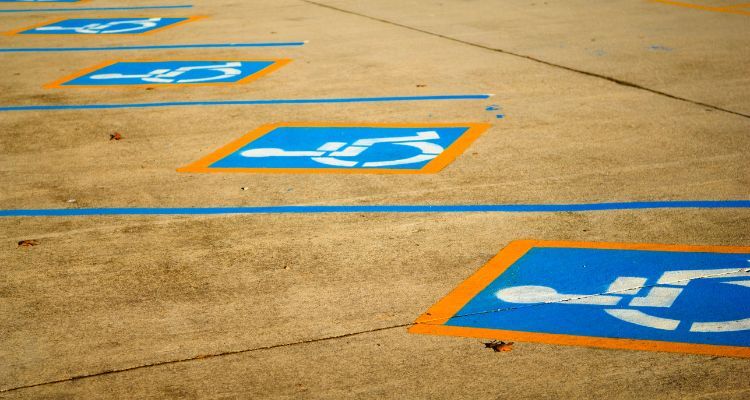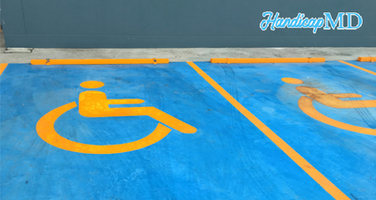
Common Challenges in Getting a Disabled Permit for CAD
Coronary Artery Disease (CAD) is one of the most common and serious cardiovascular conditions, affecting millions of people worldwide. For those living with CAD, maintaining mobility and accessibility in daily life can be challenging, especially when physical exertion is limited due to the disease's impact on heart function. A disability tag, often known as a disabled parking permit, can greatly improve the quality of life for CAD patients by providing closer, more accessible parking spaces that reduce physical strain.
However, obtaining a disability tag isn't always a straightforward process. CAD patients may face several obstacles, from difficulties with medical documentation to misconceptions about their eligibility. This article will delve into the common challenges individuals with CAD encounter when applying for a disability tag and how to overcome them effectively. Additionally, we will provide resources and solutions to ensure that CAD patients are well-equipped to navigate the process.
Understanding the Basics: CAD and Disabled Permits
Before diving into the challenges, it's essential to understand the basics of CAD and the purpose of disability tags.
What is Coronary Artery Disease (CAD)?
Coronary Artery Disease is a condition where the arteries that supply blood to the heart muscle become narrowed or blocked due to the buildup of cholesterol and other materials (plaque). This condition can lead to chest pain (angina), shortness of breath, and heart attacks. CAD is a chronic condition that can significantly impair a person’s mobility and daily functioning.
What is a Disability Tag?
A disability tag, often referred to as a disability placard or permit, is a special license plate or placard that allows individuals with significant mobility impairments to park in designated disabled parking spaces. These spaces are typically closer to building entrances and have additional space to accommodate assistive devices like wheelchairs.
Understanding Coronary Artery Disease (CAD) and Its Impact on Mobility
Coronary Artery Disease is characterized by the narrowing or blockage of the coronary arteries due to the buildup of cholesterol and plaque. This condition limits blood flow to the heart, leading to symptoms such as chest pain (angina), shortness of breath, and fatigue. These symptoms can significantly impair a person's ability to walk long distances, making it essential for individuals with CAD to have easy access to parking spaces close to their destinations.
The Americans with Disabilities Act (ADA) mandates accessible parking for individuals with disabilities, but the process to obtain a disability parking tag is not always straightforward, especially for those with "invisible" conditions like CAD. Understanding these challenges is the first step toward securing the necessary accommodations.
The Application Process: An Overview
The process of obtaining a disability tag involves several steps, including:
- Medical Evaluation: A handicapMD healthcare provider must evaluate the applicant’s condition and certify that it significantly impairs mobility.
- Documentation: The applicant must gather and submit required medical documentation to support their application.
- Submission: The completed application, along with the necessary documentation, is submitted to the relevant local or state authority.
- Review and Approval: The application is reviewed, and if approved, the disability tag is issued.
Common Challenges in Securing a Disability Tag for CAD
Despite the apparent straightforwardness of the process, individuals with CAD often face specific challenges that can complicate their efforts to obtain a disability tag.
1. Understanding Eligibility Criteria for CAD Patients
One of the primary challenges for CAD patients seeking a disability tag is understanding whether they qualify under the general criteria for disabled parking permits. Most regions have specific eligibility requirements that determine whether an individual can receive a disability tag. These requirements often focus on mobility limitations caused by a physical or medical condition.
For CAD patients, this can be tricky. Unlike certain physical disabilities that may be immediately apparent, CAD is often referred to as an "invisible disability." The symptoms, which include chest pain, shortness of breath, and fatigue, may not be outwardly visible, but they can severely impact a person’s mobility and stamina.
What causes this challenge:
- CAD symptoms, such as chest pain or shortness of breath, may come and go, depending on the patient's activity level or stress.
- CAD patients often look “healthy” to others, which can lead to skepticism about their need for a disability tag.
- There may be inconsistency in how different states or regions interpret eligibility for invisible conditions like CAD.
Solution: Know the Specific Criteria
To overcome this challenge, it's essential to thoroughly understand the eligibility criteria in your state or country. Most disability tag programs will include provisions for individuals who experience significant limitations due to cardiovascular conditions. CAD patients should focus on documenting their mobility limitations, particularly the effects of physical exertion, which is a key factor in determining eligibility.
Common criteria that may apply to CAD patients include:
- Difficulty walking more than a short distance without rest
- The need for supplemental oxygen or other mobility aids
- Experiencing shortness of breath with minimal exertion
2. Difficulty in Obtaining Adequate Medical Documentation
Another significant challenge faced by CAD patients is obtaining the proper medical documentation to support their application for a disability tag. Medical professionals, particularly those not familiar with disability tag requirements, may not provide the detailed information needed for approval.
In many cases, CAD patients are required to submit a physician's certification, which verifies that their condition severely limits their mobility and daily activities. The problem arises when physicians do not fully understand the specific information that needs to be included, leading to incomplete or insufficient medical documentation.
What causes this challenge:
- Healthcare providers may not be familiar with the disability tag application process.
- Some doctors may feel uncomfortable certifying a patient for a tag, especially if the symptoms are intermittent.
- Different states or jurisdictions may have different forms or requirements, leading to confusion.
Solution: Collaborate with a handicapMD healthcare provider
To avoid this obstacle, it is important to work closely with a handicapMD healthcare provider who understands the severity of your condition. Request that your doctor provide detailed notes on how CAD affects your ability to walk, perform daily tasks, or exert yourself. Additionally, ensure that the medical certification includes:
- The specific nature of your cardiovascular condition
- A description of the physical limitations caused by the disease
- An explicit statement of how your condition affects your ability to perform daily activities, particularly walking or moving from place to place
Make sure your healthcare provider is aware of the exact requirements for a disability tag in your jurisdiction. Some states may require specific language or statements to be included in the medical certification. Preparing your physician with this information can make the process smoother.
3. Misconceptions About CAD as a Qualifying Condition
One of the most common challenges for CAD patients is dealing with misconceptions about their condition as a qualifying factor for a disability tag. Because CAD is not a visible disability, some people—including decision-makers reviewing applications—may not fully appreciate the severity of the disease.
CAD can cause debilitating symptoms such as chest pain, fatigue, and breathlessness, which significantly impact mobility. However, the lack of visible symptoms sometimes leads to skepticism or misunderstanding about whether a person genuinely needs accessible parking.
Solution: Provide Detailed Documentation and Advocate for Yourself
To address this issue, it is critical to provide detailed documentation that clearly outlines how your CAD limits your mobility. This includes:
- Medical reports and evaluations from your cardiologist
- Detailed descriptions of your symptoms and how they affect your daily life
- Evidence of other treatments you may be receiving, such as oxygen therapy or medications, that indicate the severity of your condition
In some cases, you may also need to advocate for yourself by explaining how your condition fits the eligibility criteria for a disability tag. Be prepared to provide additional information if requested, and don't hesitate to appeal a denial if you believe your application was unfairly rejected.
4. Navigating Bureaucratic Processes
The application process for a disability tag can be complex and bureaucratic, which presents another significant challenge for CAD patients. Depending on the state or country, the process may involve filling out multiple forms, obtaining medical certifications, and submitting the documentation through various channels.
For individuals already dealing with the physical and emotional toll of CAD, this bureaucratic process can be overwhelming, especially if there are delays or administrative errors.
What causes this challenge:
- Lengthy processing times can delay access to disability tags.
- Miscommunication between the applicant and the issuing authority may lead to lost paperwork or incomplete applications.
- Online applications can be confusing for those unfamiliar with technology, while in-person applications may be challenging for patients with limited mobility.
Solution: Stay Organized and Persistent
To overcome this challenge, it is crucial to stay organized and persistent throughout the application process. Here are some practical steps you can take:
- Review Requirements in Advance: Before starting the application process, research the specific requirements and forms needed for a disability tag in your area. Some states have online portals that make it easier to understand the process.
- Prepare Documentation Early: Gather all necessary documentation, including medical certifications, proof of identity, and residency, before submitting your application. This can help you avoid delays caused by missing paperwork.
- Follow Up Regularly: After submitting your application, follow up with the relevant authorities regularly to check the status of your request. This will help ensure that your application is processed in a timely manner and that any issues are addressed promptly.
If you encounter delays or issues with the application process, don’t hesitate to reach out to your local Department of Motor Vehicles (DMV) or equivalent authority for clarification. Persistence is often key to navigating bureaucratic processes successfully.
5. The Burden of Renewing the Disability Tag
For many CAD patients, the challenge doesn’t end once the disability tag is approved. Disability tags typically need to be renewed periodically, which can create an additional burden for those managing a chronic health condition. The renewal process often requires re-certification by a healthcare provider, filling out additional forms, and submitting updated medical documentation.
For CAD patients whose condition may fluctuate or worsen over time, the renewal process can feel like an unnecessary stressor, especially if there are concerns about the tag being revoked or denied upon renewal.
Solution: Plan Ahead and Stay Proactive
To minimize the stress associated with renewing a disabled permit for CAD patients, it’s important to plan ahead and stay proactive. Here are some tips:
- Mark Renewal Dates: Keep track of the expiration date for your disability tag and set reminders well in advance to start the renewal process. Some states allow renewals to be completed online, which can streamline the process.
- Keep Updated Medical Records: Maintain up-to-date medical records and documentation from your healthcare provider. This will make it easier to obtain the necessary certifications for renewal without scrambling to gather information at the last minute.
- Communicate with Your Doctor: Regularly communicate with your healthcare provider to ensure they are aware of your condition’s progression and any changes in your mobility. This will make it easier for them to provide updated documentation when it’s time for renewal.
By planning ahead and maintaining an ongoing dialogue with your healthcare provider, you can reduce the burden of renewing your disability tag and ensure continued access to accessible parking.
6. Lack of Awareness About Disability Tag Rights
Even after obtaining a disability tag, CAD patients may face challenges related to the proper use and protection of their parking rights. This includes instances where individuals are harassed or questioned for using accessible parking spaces, despite holding a valid disability tag. Additionally, there may be situations where businesses or public spaces fail to provide adequate accessible parking options, making it difficult for tag holders to find appropriate parking.
Solution: Know Your Rights and Educate Others
As a CAD patient and disability tag holder, it’s important to be aware of your rights and to advocate for yourself when necessary. The Americans with Disabilities Act (ADA) and other disability laws protect your right to use accessible parking spaces, regardless of whether your condition is visible or not.
If you encounter issues such as harassment or inadequate parking, consider the following steps:
- Report Violations: If a business or public space fails to provide adequate accessible parking, you can file a complaint with the appropriate authority, such as the local building inspector or the ADA enforcement office.
- Educate Others: In some cases, educating others about invisible disabilities like CAD can help reduce misunderstandings. You are not obligated to disclose your medical condition, but providing information to others can foster greater awareness and understanding.
7. Misconceptions and Stigma Around Disabled Permits
Many CAD patients hesitate to apply for a disability tag due to misconceptions about what it means to have one. Some individuals worry that others will judge them for “not looking disabled” or accuse them of taking advantage of the system. This stigma can be a significant barrier, preventing people from seeking the accommodations they need.
What causes this challenge:
- Society often associates disability with visible conditions, leading to judgment or skepticism toward individuals with invisible illnesses like CAD.
- Some CAD patients may internalize this stigma and feel guilty or embarrassed about applying for a disability tag.
- Negative experiences with parking enforcement or other drivers can reinforce feelings of shame or anxiety.
Solution:
- Focus on your needs, not others' opinions: A disability tag is designed to make your life easier by accommodating your medical condition. If you meet the eligibility criteria, you have every right to apply for and use a disability tag, regardless of what others may think.
- Educate those around you: If you encounter skepticism or judgment from others, consider calmly explaining how your CAD affects your mobility. Many people are simply unaware of how serious the condition can be and may be more understanding once they have more information.
- Seek support: If stigma is affecting your decision to apply for a disability tag, consider seeking support from a CAD advocacy group or online community. Hearing from others who have faced similar challenges can be empowering and help you feel more confident in your decision.
8 Limited Awareness of Disabled Permit Availability for CAD
Despite the availability of disability tags for mobility impairments caused by CAD, many patients are unaware that they may qualify for one. This lack of awareness can prevent eligible individuals from applying and benefiting from the accommodations that would improve their quality of life.
What causes this challenge:
- CAD patients may not realize that their condition qualifies as a disability under parking permit regulations.
- Some healthcare providers may not inform their patients about the availability of disability tags, especially if the patient is not using visible mobility aids.
- Misconceptions about who qualifies for a disability tag can lead CAD patients to assume they are ineligible.
Solution:
- Educate yourself about eligibility: Take the time to research whether your symptoms qualify you for a disability tag. Most government websites offer clear explanations of the conditions that qualify, and CAD is often listed as a valid condition for those with mobility impairments.
- Speak to your doctor: If your doctor hasn’t mentioned the option of applying for a disability tag, bring it up during your next visit. Explain how your symptoms affect your mobility, and ask whether a disability tag might be appropriate for you.
- Raise awareness in support groups: If you’re part of a CAD support group or online community, share information about the availability of disability tags. Many patients are unaware of their rights, and spreading awareness can help others access the accommodations they need.
Conclusion
For individuals with Coronary Artery Disease (CAD), applying for a disability tag can be a challenging process, but it is one that is essential for maintaining mobility and accessibility in daily life. From understanding eligibility criteria to navigating bureaucratic processes, CAD patients face several obstacles on the path to obtaining a disability tag. However, by staying informed, proactive, and persistent, these challenges can be overcome.
By collaborating with healthcare providers, providing detailed medical documentation, and advocating for yourself when necessary, you can successfully navigate the application process and secure the accommodations you need to manage your condition.
References
- Americans with Disabilities Act (ADA) - ADA.gov
- Department of Motor Vehicles (DMV) Guide to Disability Parking - DMV.org
- Coronary Artery Disease: Symptoms and Treatments - Mayo Clinic
- Disability Rights and Protections - EEOC.gov
- Invisible Disabilities and ADA Compliance - InvisibleDisabilities.org
These resources can help guide you further in understanding the process and overcoming challenges associated with obtaining a disability tag for CAD.
.png)






